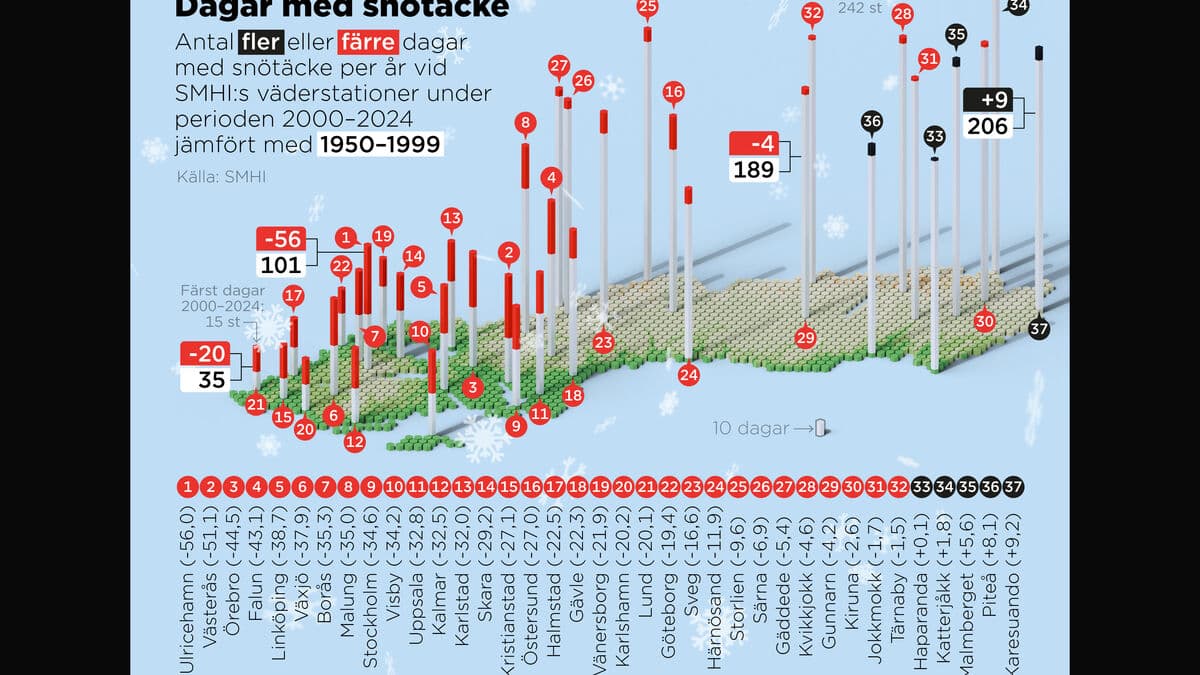Autumn leaves and rain are covering the whole country, but what's really happening with the weather and temperatures? Are winters milder and summers warmer than before?
SMHI increases climate indicators
SMHI collects historical data on how the climate is changing through various measuring stations. This allows SMHI to study annual precipitation, snow, and average temperatures, among other things.
Now, SMHI reports that they have increased climate indicators for heat and zero crossings. The measurements of these values have existed before, and it's easy to follow the development over time.
We have long measurement series for both heat and zero crossings, which makes them suitable as indicators. Just like other indicators, these are also interactive, and it's easy to see the development over time, says Pontus Törnwall, product owner for climate information at SMHI.
Heat measurements
Heat The measurements show that the number of warm summer days has increased slightly, and some years have seen intense heatwaves. Even the lowest temperature of the day has increased, resulting in tropical days, and this trend is expected to continue.
Periods of intense heat affect people's health and increase the risk of drought, fires, poor vegetation, and water scarcity. Due to climate change, periods of high temperatures have increased in recent years, a development that is clearly visible in the climate indicator for heat, says Pontus Törnwall.
Zero Crossings
Zero crossings are measurements that follow the temperature around 0°C, which is important because it affects how the ground freezes or thaws. In Sweden as a whole, there is no clear trend, but in Norrland, where days with below-freezing temperatures have been replaced by zero crossings, and in Svealand and Götaland, the autumns have become warmer.
In Norrland, the number of zero crossings is increasing during the winter. Areas that previously had stable below-freezing temperatures now experience temperature fluctuations around 0°C more often, says Pontus Törnwall.
About SMHI
SMHI was founded in 1945 (The Swedish Meteorological and Hydrological Institute) and is an expert authority under the Ministry of Climate and Business. They conduct research in climatology, meteorology, hydrology, and oceanography.





